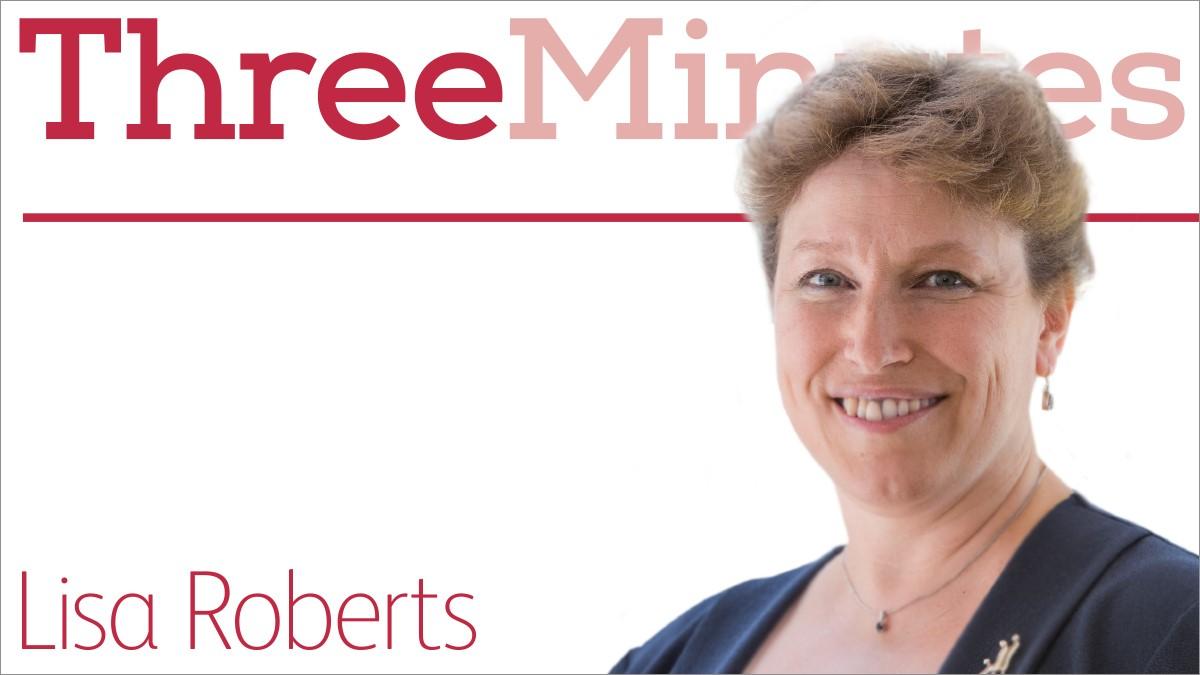Professor Lisa Roberts’ journey to a combined clinical and academic role may not always have been smooth but she has set a course for other physios to follow

This summer, Lisa Roberts became clinical chair in musculoskeletal health at Southampton University, the city where she lives. She celebrated with a family trip to a ‘magical’ Swan Lake at the Royal Opera House. She is also a consultant physiotherapist at the University Hospital Southampton NHS Trust.
What is a clinical chair?
It combines leading research, education and clinical practice. These roles have been around in medicine for a long time, but to have a post that is 40 per cent funded by the NHS and 60 per cent by a university is very rare in allied health professions.
Is there such a thing as a typical day?
No two days are the same. I love the variety of my job. Each week, I spend two days on research and two days as a consultant physiotherapist at the trust, where I have two musculoskeletal clinics, lead the clinical effectiveness agenda for seven professions, support other clinical academics and develop strategic projects, like our award-winning self-referral service for staff. The other day is filled with teaching and supervising students.
Have you always wanted a combined role?
It was a long-term ambition. In 1996, at an interview for a new lecturer post, I said I wanted to bring my academic and clinical worlds together. Giving me a thoughtful look, the interviewer said: ‘If you want to steer in uncharted waters, you must expect some rough seas.’
Then, smiling, he added, ‘but that’s no reason not to go sailing.’ I don’t think anyone has ever said a truer word.
How did you become a clinical academic?
At the time, there was no formal clinical academic pathway for non-medical professions – so I made my own. I’d finished my PhD part-time, alongside clinical and lecturing roles, but was faced with trying to get research funding with an embryonic track record in research. I had fantastic support, from the university and my physiotherapy manager, to set up a secondment for two days a week funded by the NHS, to support clinicians with publications, conferences, audits, service improvements, higher degrees or any other scholarly ideas, in addition to my clinics. I tried three times to get a three-year Department of Health fellowship to take my research further and failed, but was then successful with a five-year fellowship from Arthritis Research UK. This was a turning point in my career.
What are the challenges of your working life?
When you serve two masters, both sides do not always fully understand the other part of your role, nor its potential. You are measured by different metrics. For example, it can be challenging for NHS managers to see why writing a paper or going to a conference is important, when they have other priorities. Likewise, the academic sector does not always see the merit in clinical work, audits and improvement initiatives.
As a clinical academic, you experience highs and lows. You have an opportunity to make a difference, but you need to develop the ability to pick yourself up when things don’t go to plan. People often look at these roles and think they progress in a straight line, whereas nothing could be further from the truth. We all experience rejections of grant applications and papers – sometimes several times over. You need a strong network of family, friends and colleagues, bucket-loads of tenacity and a sense of humour. And, of course, the odd glass of wine helps too.
What would you like to see happen with these roles in future?
We need more allied health professionals moving into clinical academic roles to strengthen the evidence base of our professions. This is essential for our future. I would like to see smoother transitions for people and more job security, like the medical pathway. We also need to increase the number of professors within physiotherapy, as they only constitute 0.1% of the profession.
Number of subscribers: 1




































